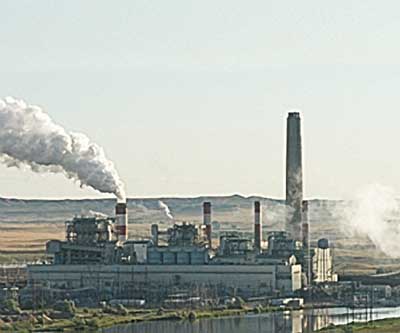Coal Plant O&M: SmartAsh Proves Its Worth
Every day, while driving to his job at PacifiCorp Energy’s Dave Johnston plant near Glenrock, Wyoming, Cole Harris used to wonder as he neared the station how opaque Unit 3’s stack emissions would look. Until a few years ago, Unit 3 (Figure 3) had trouble staying at or below opacity limits set by the state. All three units at the station use electrostatic precipitators from Neundorfer Inc. (www.neundorfer.com) to control particulate emissions, under the control of Neundorfer precipitator optimization system (POS) software.

3. Neundorfer upgraded Dave Johnston Unit 3’s precipitator with SmartAsh optimization controls to improve ash flow and reduce conveyeing stoppages. Courtesy: Industcards
A "Dumb" Design
One of the problems with Unit 3’s design was that it uses blowers and 48 feeders to pull flyash from collection hoppers. Many man-hours had to be spent keeping so many feeders working at peak performance and to monitor and diagnose those performing poorly. As Harris describes it, "The system was ‘dumb’ in the sense that it was looking to detect backpressures on the assumption that there was no ash buildup [in the hoppers]." In reality, there was so much ash in the front-row hoppers that it had bridged over and compromised the capacity and performance of the precipitator. As a result, opacity increased.
Harris realized that something had to be done to reduce both stack opacity and the workload of the mechanics maintaining the flyash removal system.
A Brainy System
Around that time, Harris attended a Neundorfer POS Users’ Group meeting and learned about SmartAsh, Neundorfer software for optimizing the operations and troubleshooting of flyash removal systems. He discovered that SmartAsh can not only isolate feeders with performance problems but also sound an alarm when flyash buildup in hoppers is approaching excessive levels. The software system can do that because it captures, in real time, 3-D pictures of the inside of the hoppers suitable for logging and trending purposes.
Harris realized that SmartAsh might be the answer to Unit 3’s opacity problems. Working with Dave Sheetz, he installed SmartAsh on the unit’s precipitator in the spring of 2005. Sheetz worked with the system daily, looking for trouble spots and mechanical problems. "The results of using the SmartAsh system have been nothing short of amazing," Sheetz said. He now can diagnose feeder performance problems in less than three minutes — a task that used to take one hour and required cycling the precipitator.
"Because I know what the backpressures should be, I can look at the computer and see right away if I have a plugged ash conveying line," Sheetz said. He uses the reported feeder pressures to isolate and diagnose any problem. To do so, he enters SmartAsh’s maintenance mode, which allows gates to be operated individually and vessel pressure to be monitored.
"[The system] improves the flow of ash, reducing the buildup of ash clinkers and eliminating bridging," Harris said. Sheetz confirmed that there have been no "high hoppers" on Unit 3 since SmartAsh was installed. Stack opacity, which had been between 20% and 30%, now runs in the 3% to 5% range. "There is a noticeable improvement," said Harris, "and I feel good that we were able to make a positive difference."
— Contributed by Neundorfer Inc. (www.neundorfer.com).